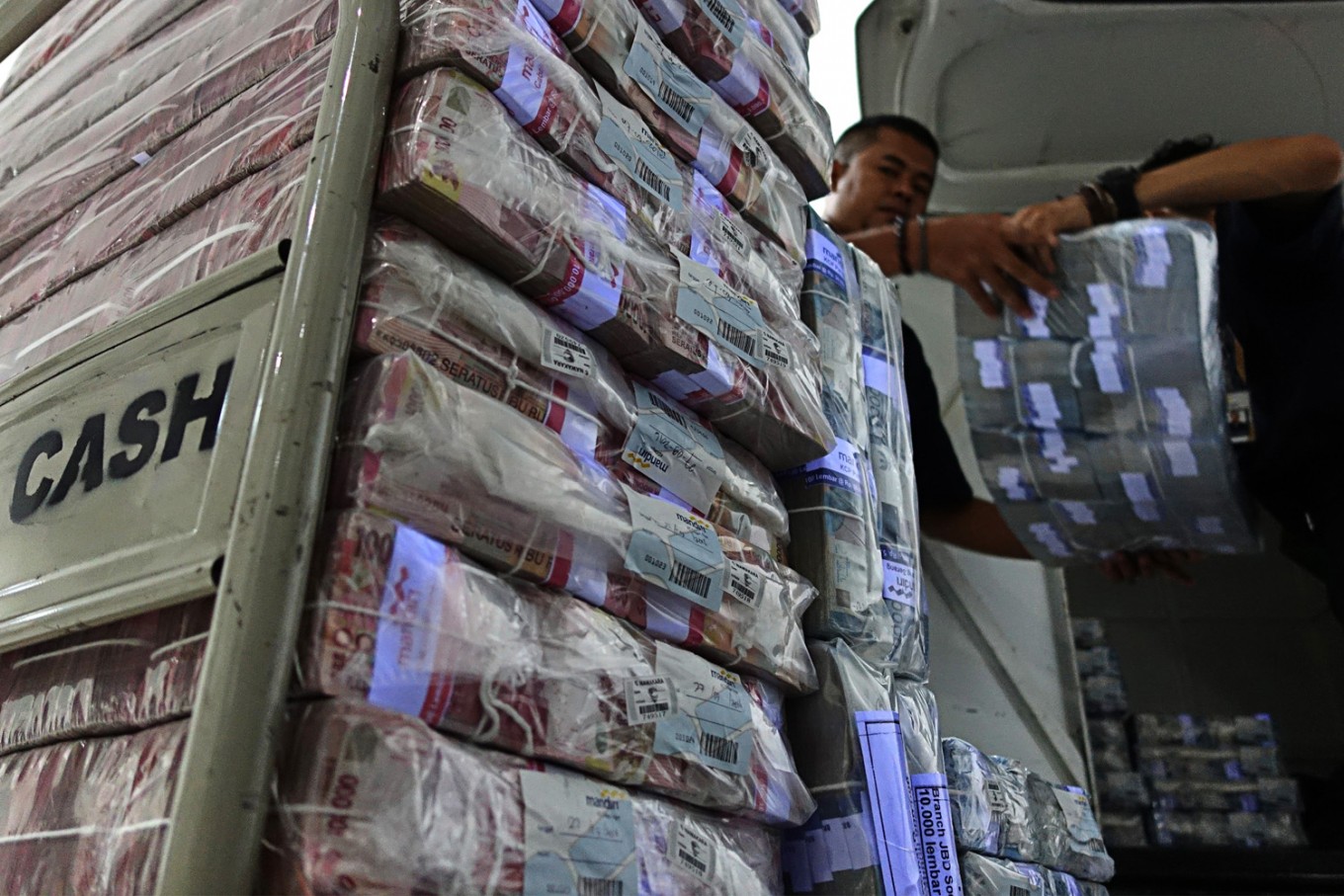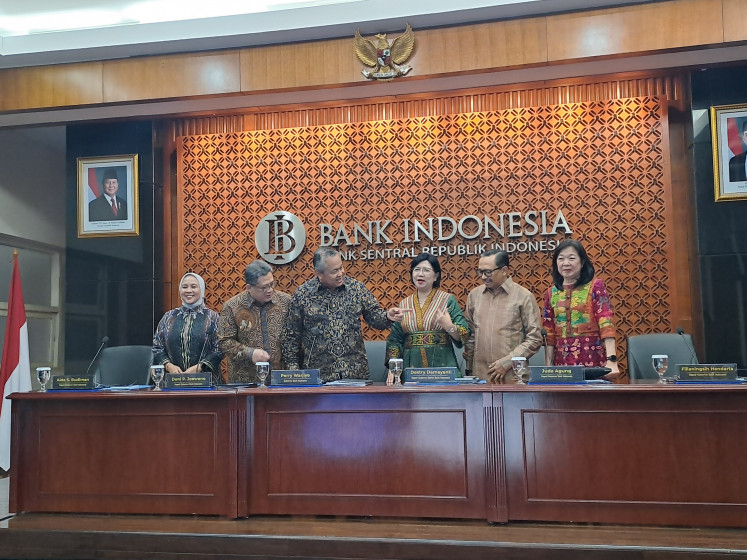Popular Reads
Top Results
Can't find what you're looking for?
View all search resultsPopular Reads
Top Results
Can't find what you're looking for?
View all search resultsBank Indonesia pledges to strengthen rupiah to Rp 15,000 per US dollar
The rupiah, already the worst performer in Asia, is currently trading at Rp 16,525 per US dollar, according to Bloomberg data.
Change text size
Gift Premium Articles
to Anyone
B
ank Indonesia (BI) has vowed to continue with its intervention in the financial market to stabilize the rupiah exchange rate to Rp 15,000 per US dollar by year-end as Indonesia faces a worst-case scenario of the rupiah sliding to a historic low as a result of the COVID-19 pandemic.
BI Governor Perry Warjiyo said Thursday that the central bank would continue to stabilize the currency to build confidence among market players, adding that the central bank had maintained communication with foreign investors to prevent a selling spree of Indonesian assets.
“With coordinated efforts between the central bank and the government, we are confident that the rupiah will not only be stable but also strengthen to Rp 15,000 per US dollar by year-end,” Perry told reporters during an online media briefing.
Read also: Explainer: BI to throw lifeline to Indonesia’s economy to fight COVID-19
The central bank and the government projected Wednesday that the rupiah would hover at around Rp 17,500 to Rp 20,000 against the greenback in the worst-case scenario, which would be the weakest in history, if the Indonesian economy contracted and the COVID-19 downturn was prolonged.
The government and BI have also prepared for an economic contraction of 0.4 percent if the pandemic lingers. The baseline scenario was that the economy would grow 2.3 percent this year, the lowest in 21 years, Finance Minister Sri Mulyani Indrawati said on Wednesday.
“This is only a what-if scenario and not a projection,” Perry clarified on Thursday, adding that the central bank saw room for improvement for the rupiah thanks to coordinated efforts among financial authorities.
The local currency, already the worst performer in Asia, is currently trading at Rp 16,525 per US dollar, according to Bloomberg data. It has depreciated around 15 percent since the beginning of the year. The rupiah touching Rp 17,500 to Rp 20,000 per US dollar would be a record low, surpassing the Rp 16,950 level recorded during the 1998 Asian financial crisis.
Read also: Rupiah may slide to Rp 20,000 per US dollar in worst-case scenario
BI has been stabilizing the rupiah through its "triple market intervention" measures, focusing on the foreign exchange spot market, domestic non-deliverable forward market and secondary bond markets.
The central bank has bought a total of Rp 172.5 trillion (US$10.3 billion) worth of government bonds, including Rp 166.2 trillion from foreign investors in the secondary market. It also saw signs of a capital outflow slowdown, which previously caused the rupiah to depreciate.
Capital outflows eased from Rp 167.9 trillion during the height of the COVID-19 outbreak to Rp 145.1 trillion between Jan. 20 and March 30.










